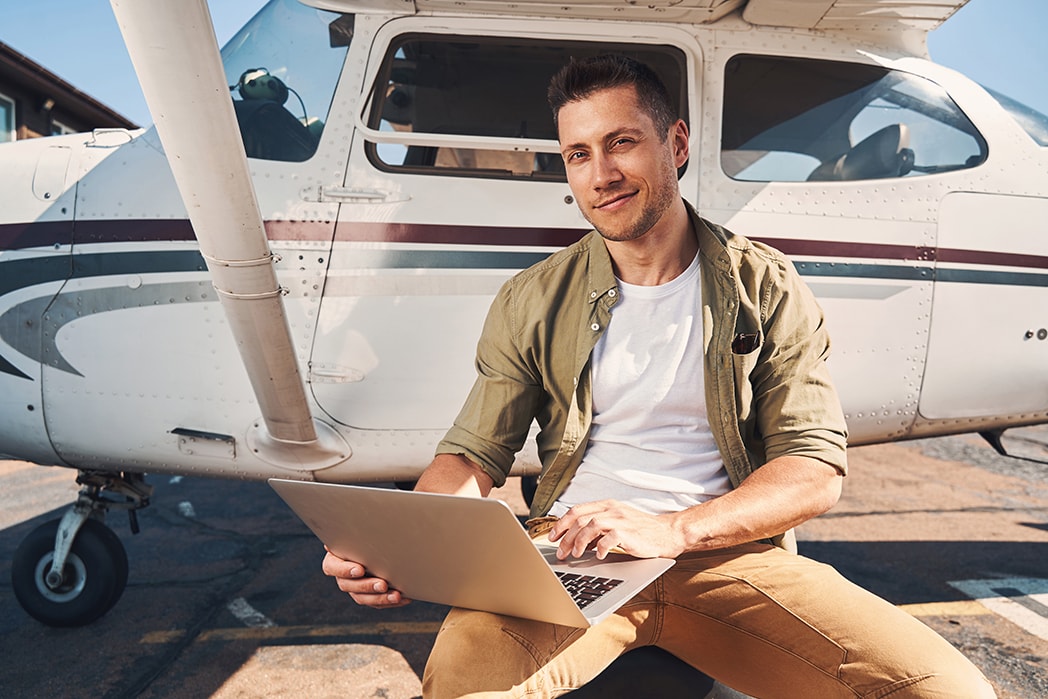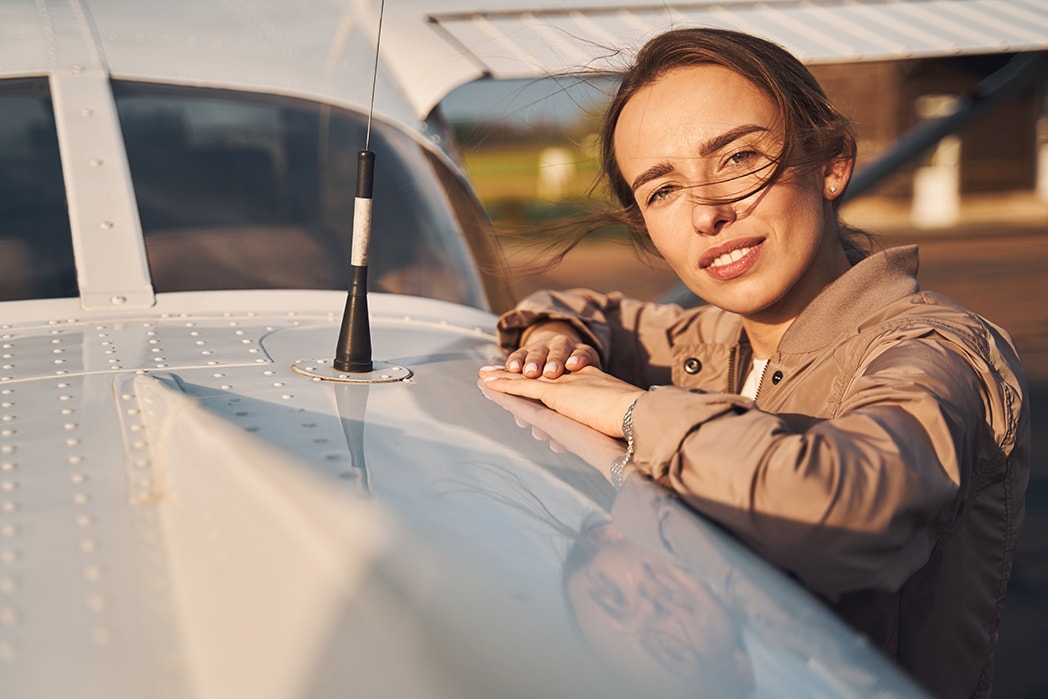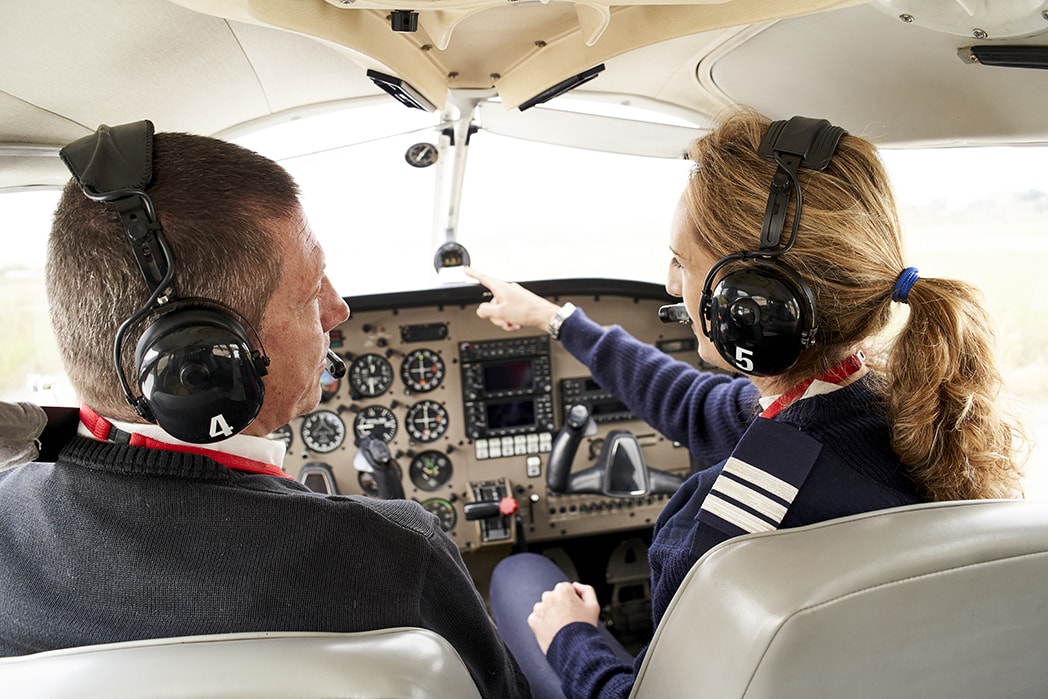Where to Learn to Fly: Top Schools for New Pilots
May 19, 2025
Wondering where to learn to fly? This guide will help you find the best flight schools and provide tips for choosing the right one. Whether for fun or career, get ready to take to the skies.
Choosing the Right Flight School
Choosing the right flight school is a big decision that can make a huge difference in your future as a pilot. A good flight training program will give you excellent instruction and lay the foundation for a successful career in aviation.
If you're wondering where to take flying lessons, consider several key factors including the location of the school, cost of training, and quality of aircraft and instructors.
Schools with modern fleets and facilities will enhance both learning outcomes and safety during flight training. Institutions like Embry-Riddle Aeronautical University and University of North Dakota are well known for their comprehensive programs that combine academic degrees with pilot training.
The location of a flight school plays a big role in your overall experience during pilot education. The local weather, types of airspace around the facility and how easy it is to get to it should all be considered when determining which location fits your needs.
Flight school costs range from around $15K to $100K or more depending on what’s included in each program. Looking into financial aid options can help you manage these costs better.
At the core of any great educational journey is having top notch aircraft and teaching environments key elements that will not only ensure safety but also engagement throughout students’ development into competent pilots.
Location Matters

Where you train can make a big difference to your training. Different weather and airspace can affect how often you fly and the quality of your flights.
For example, learning to fly in an area with all sorts of weather will give you practice in different flying environments which will help your skills and confidence.
Being close to busy airspace will give you more opportunities to practice communicating with air traffic control and other aircraft. Choose a flight school in an environment that meets your aviation training goals and your lifestyle so you can enjoy the journey of flight training.
Cost and Financing Options
Cost is a big consideration for many would be pilots in the US, from $15,000 to $100,000 depending on the program.
Research and understand the different financing options available, scholarships, loans and payment plans to make training more affordable. Some flight schools also offer financial aid or partnerships with financial institutions to help manage costs.
Being informed about the costs and financing options will help you plan your training better.
Fleet and Facilities
The quality of your flight training experience is greatly enhanced by a modern, well-maintained fleet of aircraft and state of the art facilities. Flight schools that have multiple aircraft models and simulators can train you in a wide range of flying scenarios.
Having access to modern technology and resources within these facilities makes the learning environment safer and more effective.
When choosing a flight school for your aviation education it’s important to check the condition and quality of their fleet and facilities to ensure you get the best training possible.
Popular Flight Schools Across the U.S.

Across the United States, top flight schools offer great training, modern aircraft and a safe environment for students. For those exploring flying lessons USA, it's important to research each school’s reputation for quality instruction and ensure their programs align with your flying goals, especially FAA approved ones.
Whether you are on the East Coast, West Coast or in the heartland of the Midwest, there’s a bunch of great flight schools to choose from.
East Coast Flight Schools
The East Coast has some of the best flight schools with extensive training programs. Among them, Florida Flyers Flight Academy in St. Augustine stands out for their customized approach to flight training, costs around $42,000 for a detailed program.
They are dedicated to providing personalized learning experiences, they focus on giving each student personalized attention and support to ensure their success in flight training.
West Coast Flight Schools
On the West Coast, Pacific Aero and SoCal Flight Training are the top flight schools. The training environment at Pacific Aero is beautiful, using the coastal airspace to make the training experience more enjoyable for student pilots.
SoCal Flight Training offers training in various flying disciplines and courses for specific skills like mountain flying and tailwheel instruction to fit any pilot’s goals. Aerodynamics Flight School in California is highly rated for their instructors.
Midwest Flight Schools
In the Midwest, Purdue University in West Lafayette, Indiana is well known for their aviation program and alumni, including astronaut Neil Armstrong.
Inflight Pilot Training in Minnesota is fixed wing training and very personalized, student focused. Affordability and quality are the key for pilots looking for a flight school in this area.
Types of Pilot Certificates and Ratings

Understanding the different pilot certificates and ratings is important as they determine what a pilot can fly and where they can fly. This is key to choosing the right path for your aviation career.
The basic certificates are the Private Pilot Certificate, Instrument Rating and Commercial Pilot Certificate. Each is designed to develop specific skills and meet requirements for different flying environments and career directions.
Private Pilot Certificate
To apply for a private pilot certificate you must be 17 years old and be able to speak English. Holders of this certificate can fly for fun or recreational, transport passengers and fly VFR.
Getting this certificate is a big milestone for those wanting to become pilots as it sets the foundation for further training and getting a student pilot certificate.
Instrument Rating
Pilots who want to fly in all weather must get an instrument rating which greatly improves their navigation skills. This requires extra training on instruments and navigation so you can fly in conditions with zero visibility by following Instrument Flight Rules (IFR).
Getting an instrument rating allows you to fly in more challenging conditions while increasing safety and your confidence in your flying skills.
Commercial Pilot Certificate
To get a commercial pilot certificate you need to pass a written exam and a practical test. With this certificate you can get paid for flying services which includes at least 50 hours cross country flying. To fly big complex aircraft you need to get an additional type rating which proves you can fly those types of operations.
Getting your commercial pilot certificate is a big milestone in the aviation industry. It opens doors for professional work with airlines, flying corporate jets or offering charter flight services.
The Flight Training Process

Learning to fly involves several stages: ground school, hands-on flying lessons and a comprehensive check ride. These phases develop the skills and knowledge required to become a well trained pilot.
Understanding the different parts of flight training allows you to know how to prepare for each segment so you get the most out of your pilot training.
Ground School
Ground school is where you learn the theoretical aspects of flight like aerodynamics and navigation that are part of pilot training.
It uses books and aviation manuals to explain concepts related to flying and regulations. This foundational knowledge is also essential when preparing for the FAA knowledge test, a required step toward earning your pilot certificate.
At this stage, many students benefit from enrolling in our comprehensive ground school program, which offers expert instruction tailored to help you succeed.
The option to do ground school online allows students to progress at their own pace, for those who have other commitments. While online ground school is convenient, some students may miss the practical engagement of face-to-face teaching.
Hands-On Flight Training
Hands on training involves doing takeoffs and landings and emergency procedures. Flight simulators are great for practicing flying techniques and scenarios in a risk-free environment.
This hands-on private pilot training is key to developing the skills and confidence to learn to fly and become a proficient pilot.
Final Checkride
During the final evaluation phase known as the checkride, student pilots must demonstrate their proficiency to an examiner.
This is a big deal. It’s a detailed exam of both knowledge test scores and hands on flight skills required to get a pilot certificate and meet FAA standards.
Passing this checkride is a big milestone...you’ve made it through flight training!
Specialized Training Programs

Training programs for pilots who want to improve their skills in specific areas of aviation such as sport pilot training are available.
These specialized courses cover topics like mountain flying, multi engine rating and recurrent training to stay current with different flight conditions and types of aircraft.
Participating in these targeted training sessions can qualify you for new career paths.
Mountain Flying
To fly safely in mountains pilots, need to have a high awareness of the terrain and weather. Vigilance is key as downdrafts and wind shear can cause unexpected changes in altitude in mountainous terrain.
Using the topography as a navigation aid helps pilots to maintain their altitude and navigate to landing areas in the mountains. By mastering ‘slope landings’ and being familiar with mountain flying techniques pilots improve their judgement and flight safety.
Multi-Engine Rating
Having a multi-engine rating allows you to fly single engine aircraft with more than one engine. This rating makes you more competitive in the job market for commercial aviation.
To get a multi-engine rating you need 10-15 hours of multi-engine flight training and pass a practical test.
Recurrent Training
Continuing education is key to staying current and recurrent training proves this. This type of training helps you to comply with regulations and also strengthens your operational skills and awareness of safety procedures.
The continuous nature of this training means you will be efficient in your role and secure in the knowledge you can do your job.
Online Courses and Resources

Pilots are turning more and more to online courses and resources which offer flexibility. These tools are an add on to traditional flight training and allow students to learn on their own schedule.
Using these online courses and additional resources will deepen your understanding of the subject matter and give you a stronger foundation for hands on flight training sessions.
Online Ground School
Online ground school allows students to learn flexibly, adjust their study time to fit their schedule. This is especially good for people with varied schedules as it provides all the learning tools and materials needed to acquire pilot skills.
Although more affordable than traditional ground school options these online programs sometimes miss out on the personal interaction that some students may consider important in their learning process.
At Flight Nerd Air Force, our online ground school provides structured lessons, interactive modules, and direct instructor support perfect for students who need flexibility without compromising on quality.
Supplemental Learning Resources
Helping future pilots build their expertise and aeronautical knowledge, additional resources are a big part of their formal flight training.
Resources like ‘The Pilot’s Handbook of Aeronautical Knowledge’ and ‘The Complete Private Pilot’ are gold for learning aviation theory and practical application.
‘The Complete Private Pilot’ is available here and is highly recommended for students starting their flight journey.
Flight simulators are a critical tool for students to practice flying, situational awareness and emergency procedures without actual flight time.
For students looking for extra support the internet has plenty of educational content through YouTube channels, webinars and aviation forums. These platforms not only have different types of learning content but also a community where student pilots can get answers to their questions.
What to Expect
A discovery flight is a first flying lesson where you’ll fly with an instructor for about an hour. To prepare for this adventure make sure you have a positive attitude and are well rested and hydrated.
During this introductory flight you’ll do basic maneuvers such as taking off, cruising and landing all under the watchful eye of your instructor. The purpose of this experience is not only to teach you basic flying skills but to build your confidence as a budding pilot.
Essential Gear
Make sure you have the right gear for a good flight training experience. You’ll need a logbook, headset and suitable flying clothes. A logbook is essential for recording your hours flown and tracking your progress, a headset for clear communication with instructors and aircraft.
Wearing proper flying clothes during training sessions will also answer the question everyone asks when they start flight training.

